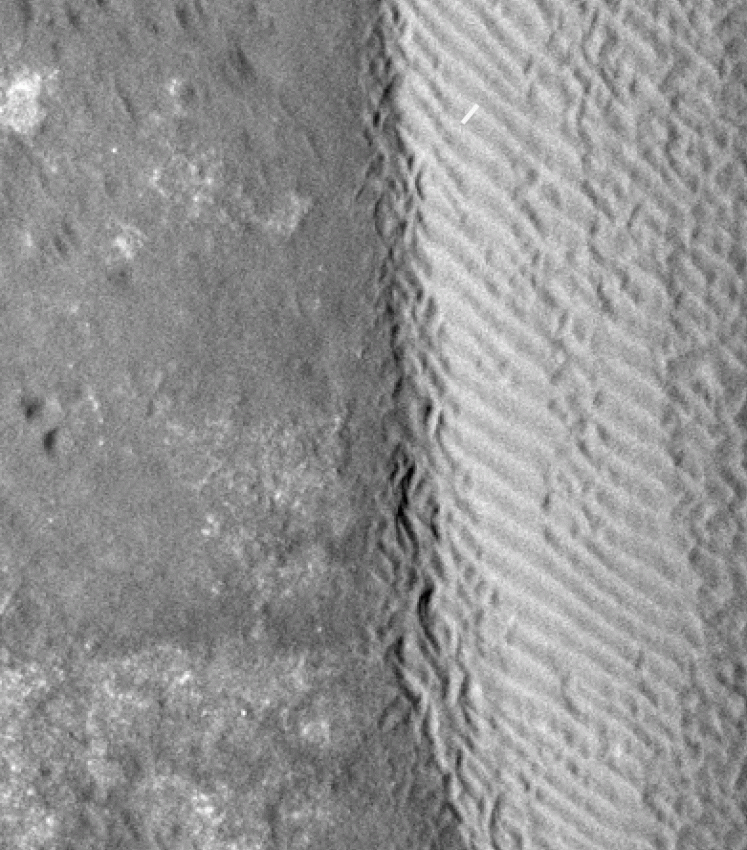Mars – so close yet so far.
As reported elsewhere in Trebuchet, NASA's plans to land a car-sized exploration vehicle on the planet will soon, all things going to plan, provide details on what lies below the planet's surface. But the atmosphere of Mars has it's own allure too. Sand dunes, and their shifting patterns, provide the data for the latest observations released by NASA's press office.
PASADENA, Calif. — Images from NASA's Mars Reconnaissance Orbiter show sand dunes and ripples moving across the surface of Mars at dozens of locations and shifting up to several yards. These observations reveal the planet's sandy surface is more dynamic than previously thought.
the planet's sandy surface is more dynamic than previously thought
"Mars either has more gusts of wind than we knew about before, or the winds are capable of transporting more sand," said Nathan Bridges, planetary scientist at the Johns Hopkins University's Applied Physics Laboratory in Laurel, Md., and lead author of a paper on the finding published online in the journal Geology. "We used to think of the sand on Mars as relatively immobile, so these new observations are changing our whole perspective."
Less than a decade ago, scientists thought the dunes and ripples on Mars either did not budge
While red dust is known to swirl all around Mars in storms and dust devils, the planet's dark sand grains are larger and harder to move. Less than a decade ago, scientists thought the dunes and ripples on Mars either did not budge or moved too slowly for detection.
MRO was launched in 2005. Initial images from the spacecraft's High Resolution Imaging Science Experiment (HiRISE) camera documented only a few cases of shifting sand dunes and ripples, collectively called bedforms. Now, after years of monitoring the Martian surface, the spacecraft has documented movements of a few yards (or meters) per year in dozens of locations across the planet.
The air on Mars is thin, so stronger gusts of wind are needed to push a grain of sand. Wind-tunnel experiments have shown that a patch of sand would take winds of about 80 mph (nearly 130 kilometers per hour) to move on Mars compared with only 10 mph (about 16 kilometers per hour) on Earth. Measurements from the meteorology experiments on NASA's Viking landers in the 1970s and early 1980s, in addition to climate models, showed such winds should be rare on Mars.
HiRISE is operated by the University of Arizona in Tucson. The instrument was built by Ball Aerospace & Technologies Corp. of Boulder, Colo. The Mars Exploration Rovers Opportunity and Spirit were built by JPL. JPL also manages the Mars Reconnaissance Orbiter and Mars Exploration Rover projects for NASA's Science Mission Directorate in Washington. Lockheed Martin Space Systems of Denver is NASA's industry partner for the Mars Reconnaissance Orbiter Project and built the spacecraft.
Source: NASA

The aim of art is to represent not the outward appearance of things, but their inward significance. – Aristotle
















